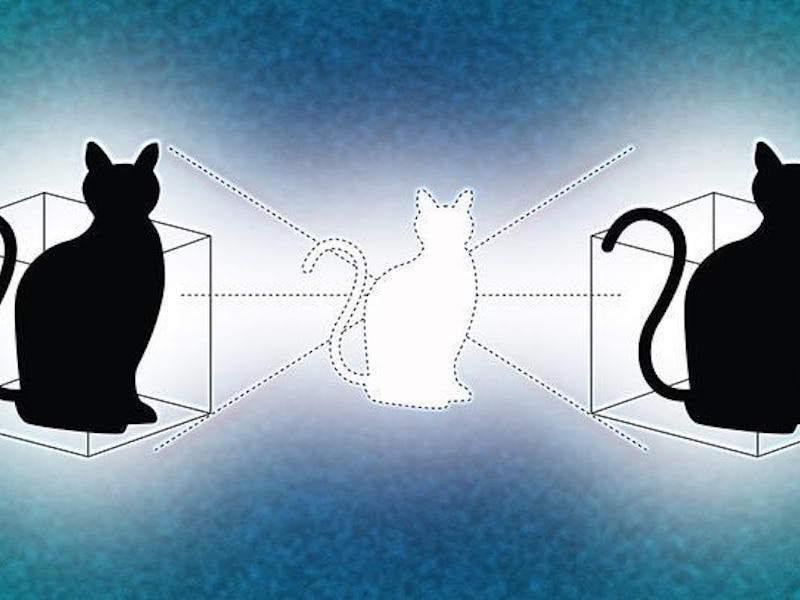How Physicists Convinced Schrödinger’s Cat to Asexually Reproduce
The world’s most famous thought experiment just got a thrilling sequel.

Schrödinger’s cat is probably the world’s most famous living and dead cat thanks to the thought experiment that has come to serve as a sort of synecdoche for all of quantum physics. The furry little bugger is part of a hypothetical scenario put forward by Austrian physicist Erwin Schrödinger, illustrating the paradox of superposition in quantum physics. In short, Schrödingers cat is always simultaneously alive and dead, highlighting the practical absurdity behind the way we know particles to behave in the quantum world. Now, this intellectual blockbuster is getting its inevitable sequel. Scientists have doubled the number of possible casualties in the scenario by proving Schrödinger’s cat can, in fact, be in two different death boxes at once.
Let’s get into it.
For those unfamiliar, here’s a short synopsis of how Schrödinger’s cat works: A feline is placed in a box in which its life is dependent on whether or not a single atom of an element undergoes decay or not. If the atom decays and emits radioactivity, the cat is kaput. If the atom doesn’t decay, the cat survives and gets to enjoy the rest of its nine lives. Before we open the box and observe the results, the atom exists in two superpositions simultaneously — both decayed and not decayed. Therefore, the cat itself is alive and dead at the same time. Only by opening the box can we determine, and thereby render singular, the quantum state.
In the newest issue of Science, a team of researchers from Yale University take this a step further by demonstrating a more bizarre Schrödinger’s cat, that creates two different cats placed in two different life-or-death contraptions tying their fates together. The cats live or die together due to an idea called quantum entanglement, which suggests that two particles at a remove can still interact with one-another and exhibit related behaviors and actions.
The Yale team basically constructed two big, 3D microwave cavities connected by a superconducting, artificial atom. The hypothetical cat is represented by the confined microwave light contained in both cavities. Yes, a real cat is not the accumulation of a bunch of photons trapped in a box, but considering the limitations of demonstration superposition with actual cats, this is a pretty good substitute.
“This cat is big and smart,” said Chen Wang, a physicist at Yale and the lead author of the study, in a news release. “It doesn’t stay in one box because the quantum state is shared between the two cavities and cannot be described separately.”
In other words, Schrödingers cat becomes Schrödinger’s cats. And more importantly, as Wang described, these cats “are entangled.”
By itself, this new knowledge is just plain neat in the context of understanding exactly how superposition works, but it also has practical applications — mostly notably in the generation of quantum bits. These “qubits” are data encoded not as binary digits that can only exist as one of two states, but instead have the ability to exist in multiple states at once thanks to superposition. Qubits can basically encourage the development of faster computers because they can run tasks much more quickly than conventional systems can. More particles in a given computing system means more information that can be processed at once.
Your future computer might just contain a pair of “cats” that are both dead and alive. This promises to make watching YouTube clips weirder.